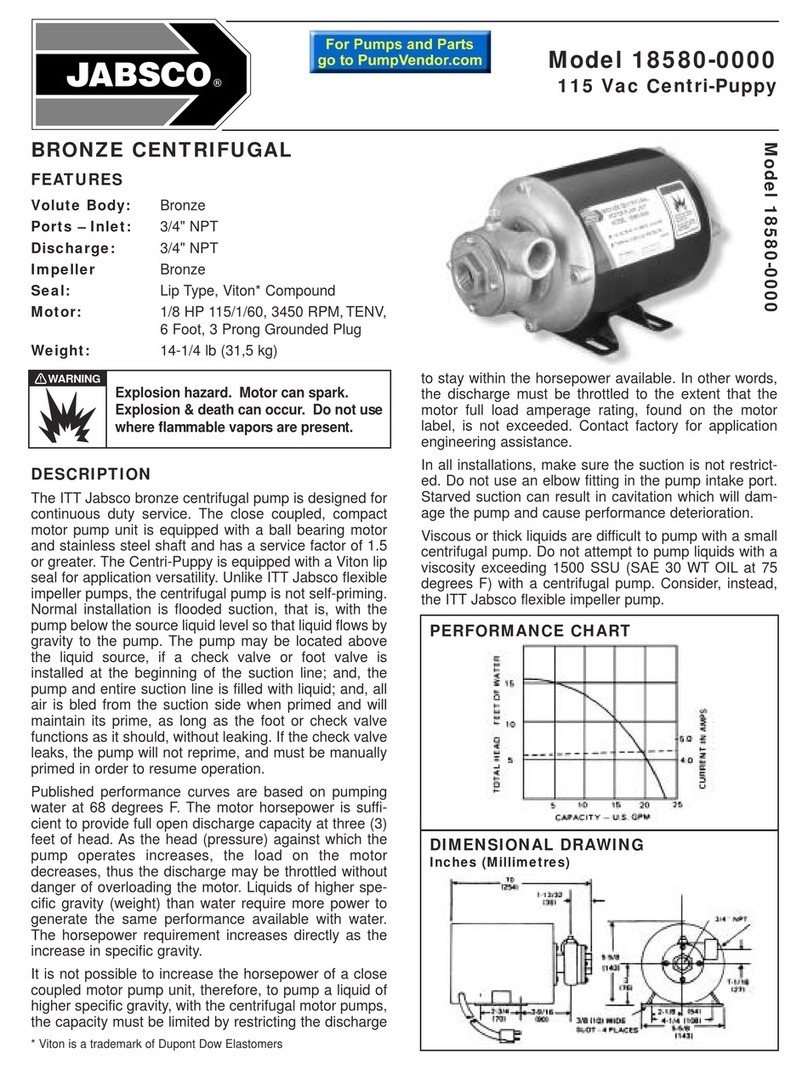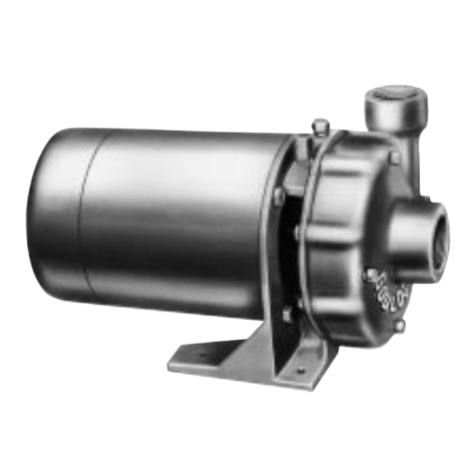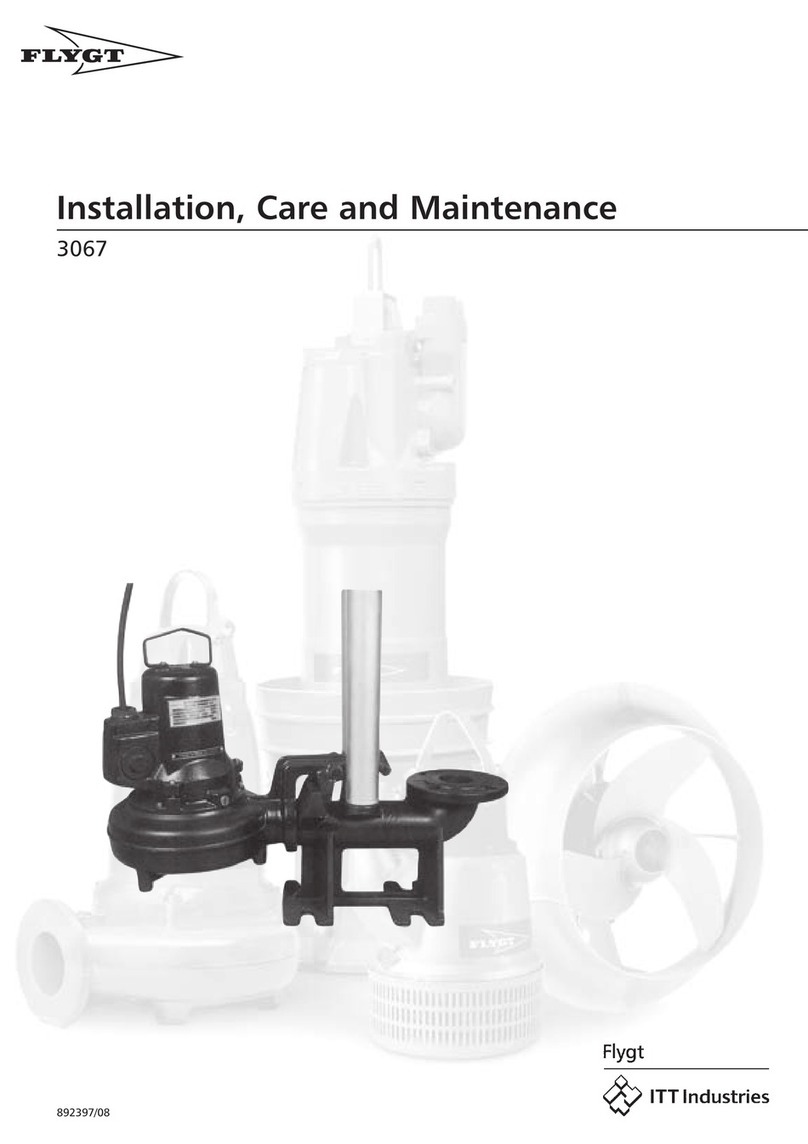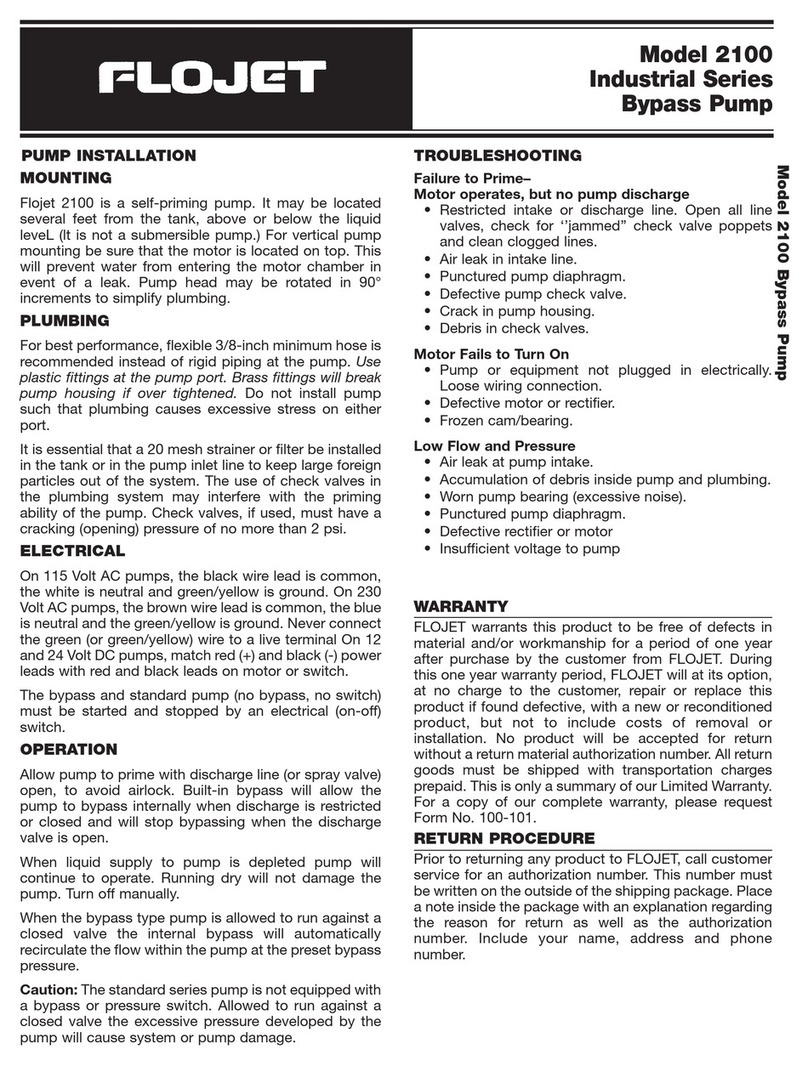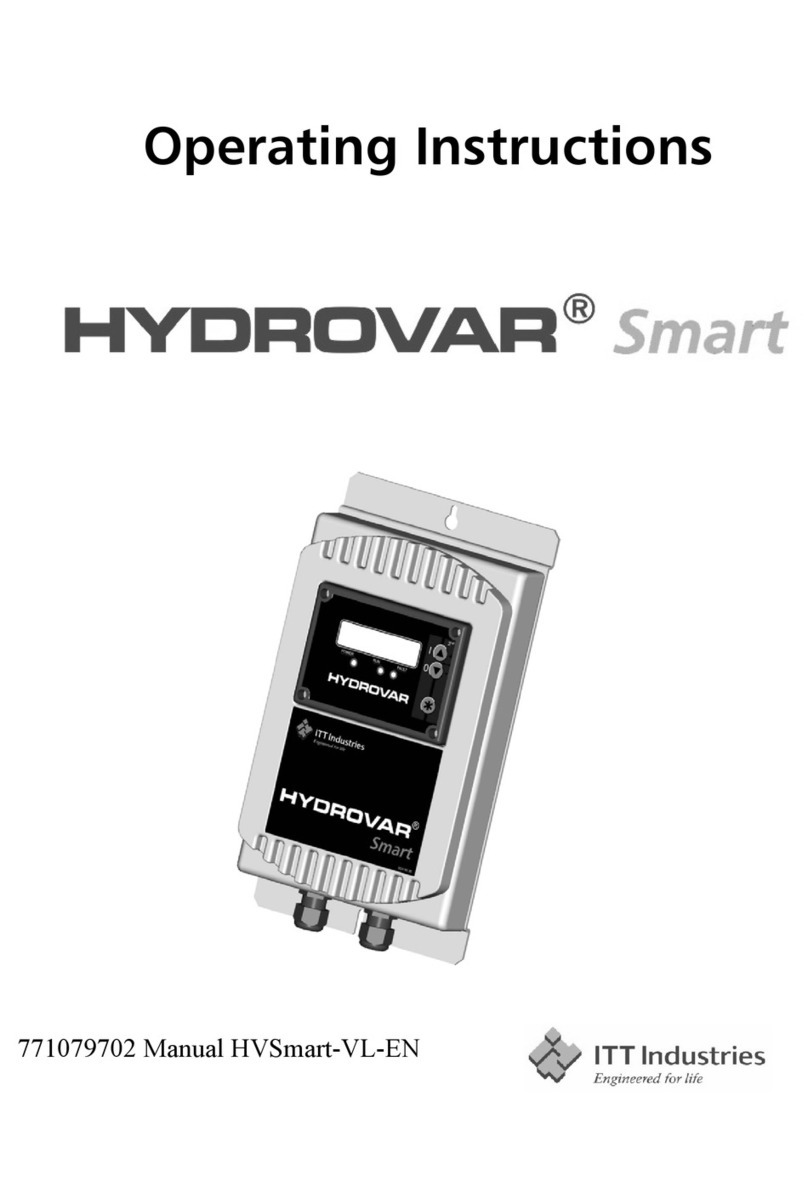pump discharge to insure optimum performance.
Using undersized pipe may dramatically reduce the
flow and therefore waste energy. Your pump supplier
can suggest the correct pipe for your installation.
3.2. Install a threaded pipe adapter, matched to the pipe
type you are using, into the threaded pump
discharge. One end will have a male thread and the
other end will have a barbed connector, compression
fitting or solvent weld connector. Use Teflon® tape
on all threaded joints. If using solvent welded pipe
and fittings it is best to dry fit them first and after
verifying the fit, solvent weld. A union installed just
above the sump or basin cover will facilitate future
maintenance and replacement. See Chart 1 for
discharge sizes.
3.3. Install a line check valve within 2 feet of the pump.
Install per valve manufacturer’s instructions.
IMPORTANT – Drill a 1⁄8" (3.2mm) relief hole in the
discharge line approximately 2" (51mm) above the
pump discharge connection but below the check
valve and within the sump. This “relief” hole allows
trapped air to escape from the pump and prevents
air-locking the pump. Failure to drill this hole is a
major cause of sump pumps failing to pump after
long periods of inactivity such as seasonal use.
4. INSTALLATION IN SUMP
4.1. The pump can be placed directly on the bottom of a
poly or fiberglass sump basin or a concrete sump
bottom. If the bottom is packed gravel the stones
must be larger than
1⁄2" (13mm) in diameter and the pump should be
placed on bricks for support.
4.2. After connecting the discharge pipe to the pump it
can be lowered into the sump (basin). Always lower
the pump by the handle and the pipe, never by the
power cord. Place the pump against the basin wall
so the switch is to the center. See Figure 1.
MODEL INFORMATION
(Chart 1)
Min. Min. Min. Min. Max. Shipping
Circuit Float Cord Discharge On Off Basin Solids Weight
Model No. HP Volts Amps Breaker Phase Switch Style Length Connection Level Level Dia. Size lbs/kg
JSP03 1/3 115 2.8 10 1 Piggyback Wide Angle 20' 1-1/2" 11" 5" 12" 3/8" 11/5
JSP07 3/4 115 6.6 10 1 Piggyback Wide Angle 20' 1-1/2" 12.5" 6.5" 12" 3/8" 15/6.8
1. GENERAL INFORMATION
1.1. Sump pumps are designed to operate intermittently
and usually seasonally. It is recommended that you
test the pump before your rainy season begins to
insure that the pump and switch are operating properly.
1.2. We suggest installing a high water alarm system
and a battery back-up pump system for finished
basements or areas where flooding will cause
property damage. A back-up generator is another
option you can discuss with your pump installer.
Most power outages occur during rain storms, just
when you need your sump pump the most! Pump
manufacturer's warranties cover only the pump.
Labor and incidental damage such as flooding is not
covered.
2. PRE-INSTALLATION CHECKS
2.1. Open all cartons and inspect for shipping damage.
Report any damage to your supplier immediately.
2.2. Verify that all equipment is the correct voltage.
Warranty does not cover damage caused by
connecting pumps and controls to incorrect voltage.
2.3. Is your basin sized correctly and the proper type for
the location?
Diameter – It must be wide enough to allow the
pump and switch to physically fit and provide room
for the switch to operate freely. See “min. basin
diameter” in Chart 1.
Depth – It must be deeper than the
minimum depth at which the switch
turns the pump On. As an example, if the pump turns on
at 15" you want to use a basin deeper than 15".
See "On level" in Chart 1.
Style – There are several sump basin
styles available. The location of the
sump determines if you require a cover and what type
you require. It is important to keep debris from entering
the sump and clogging the pump. An open sump in a
traffic area such as a basement is dangerous. If children
or pets will be playing in the area a bolt-on or child-proof
cover is recommended.
3. PIPING
3.1. Discharge pipe should be the same size as the




